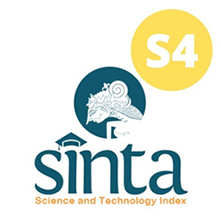Comparison of Digital Filter Orders in Single Lead Electrocardiographic Design for Reducing Interference Motion Artifact
Abstract
Developed a new method to overcome motion artifacts in Electrocardiogram (ECG) signals, which often interfere with accurate clinical analysis. Motion artifacts, such as body movements, can cause significant distortions in the ECG signal, resulting in incorrect interpretation and affecting medical diagnosis. The main objective of this research is to design and implement an infinite impulse response (IIR) filter with a predetermined sequence, namely orders 2, 4, 6, and 8 to reduce motion artifacts in the ECG signal. We aim to improve ECG signal quality by preserving important ECG signal information and reducing noise caused by motion artifacts. This research contributes to developing more precise and reliable ECG signal processing techniques. The proposed method provides an effective approach to handling motion artifacts, enabling more accurate and reliable ECG interpretation by medical professionals. We used an ECG simulator that provides body movement simulation as a basis for experiments. The detected ECG signal is processed with a predetermined order IIR filter. We compare the filtered signal to the original signal to measure the effectiveness of reducing motion artifacts. Experimental results show that the applied IIR filter efficiently reduces motion artifacts in the ECG signal. The SNR assessment showed a significant improvement, proving the success of this method in maintaining ECG signal quality. The result is that in the 2nd order, the SNR value is 22.25 dB, in the 4th order the SNR value is 22.75 dB, in the 6th order the SNR value is 22.99 dB, in the 6th order the SNR value is 22.99 dB. 8 obtained an SNR value of 23dB. This study successfully demonstrated that using IIR filters in a specified order effectively reduces motion artifacts in the ECG signal, increases SNR, and maintains the integrity of clinical information in the ECG signal. The implications of this research extend to medical technology development and clinical applications, providing a strong foundation for continued research in more efficient and reliable ECG signal processing.

This work is licensed under a Creative Commons Attribution-ShareAlike 4.0 International License.
Authors who publish with this journal agree to the following terms:
- Authors retain copyright and grant the journal right of first publication with the work simultaneously licensed under a Creative Commons Attribution License that allows others to share the work with an acknowledgement of the work's authorship and initial publication in this journal.
- Authors are able to enter into separate, additional contractual arrangements for the non-exclusive distribution of the journal's published version of the work (e.g., post it to an institutional repository or publish it in a book), with an acknowledgement of its initial publication in this journal.
- Authors are permitted and encouraged to post their work online (e.g., in institutional repositories or on their website) prior to and during the submission process, as it can lead to productive exchanges, as well as earlier and greater citation of published work (See The Effect of Open Access).











